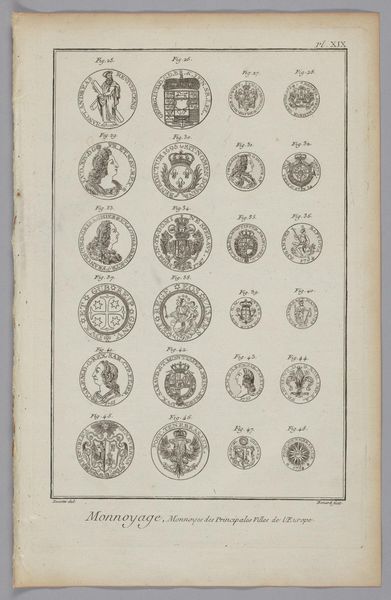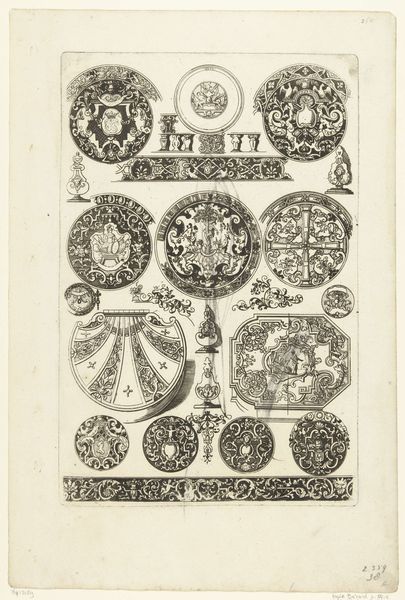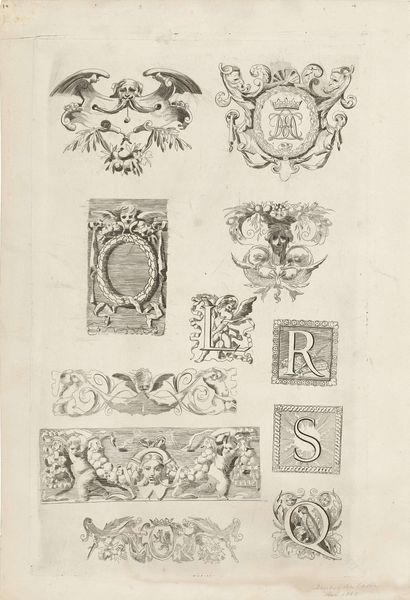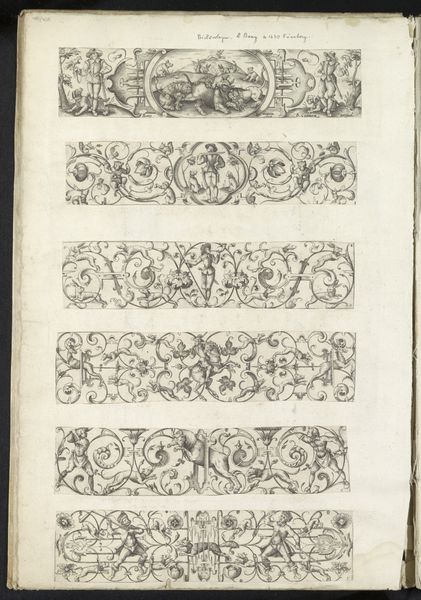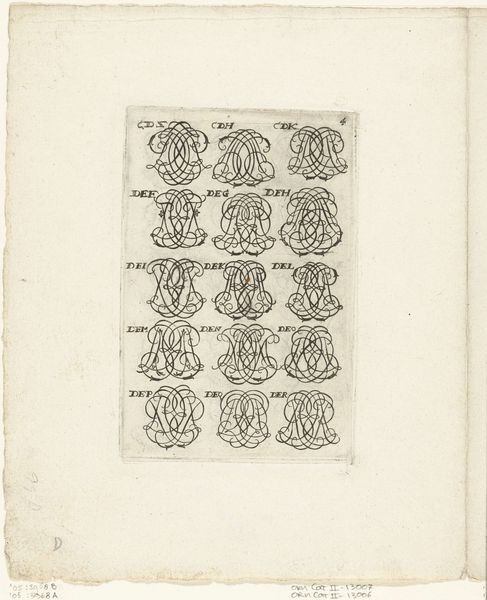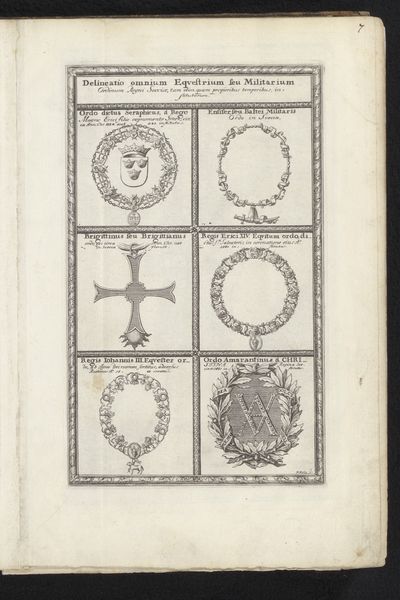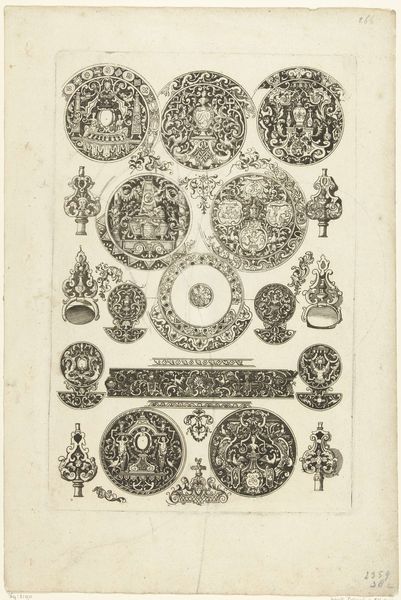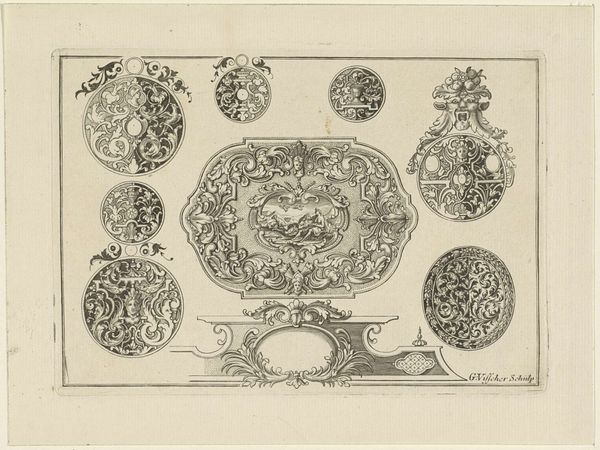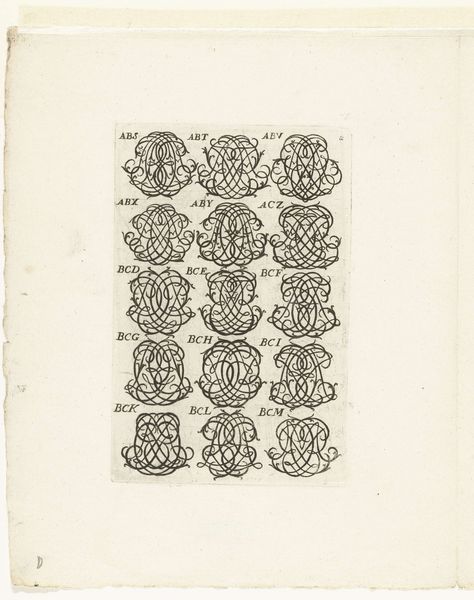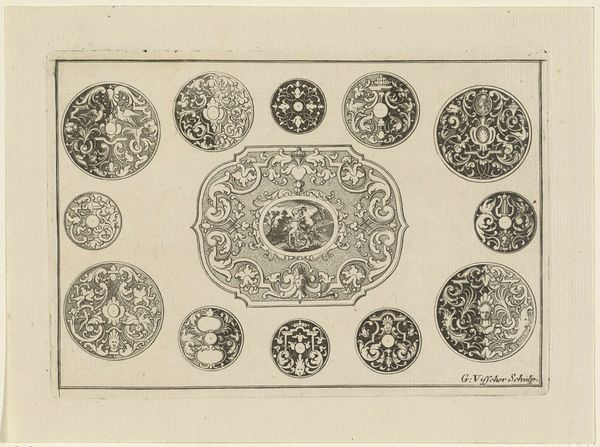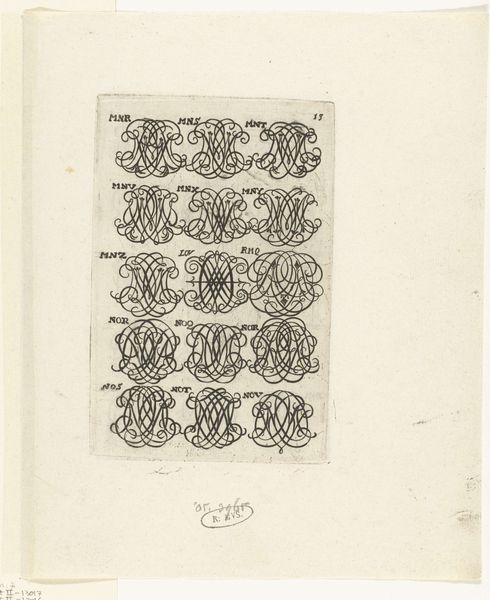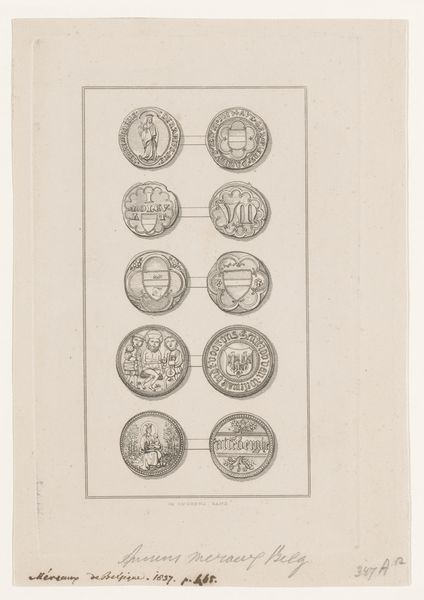
print, engraving
# print
#
figuration
#
11_renaissance
#
history-painting
#
coin
#
engraving
Dimensions: height 525 mm, width 403 mm
Copyright: Rijks Museum: Open Domain
Editor: This engraving from 1642 by Theodoor van Thulden, titled "Nineteen Roman coins with mottos and emblems of emperors," presents a series of coins. It's incredibly detailed. How might we think about this piece beyond its representational quality? Curator: Given the artist's evident skill in mimicking the texture and relief of the coins through engraving, let's consider this print as an object within a broader economy of representation. What labor went into making such detailed recreations, and how did this "mass production" – compared to unique minted coins – alter the reception and perceived value of antiquity? Editor: That's an interesting take. It feels like he's not just depicting coins, but also mass-producing ancient emblems, turning something rare into a commodity. Curator: Exactly. The very act of reproducing these coins through printmaking transforms them. The print becomes a document, a record, a teaching aid, and a commodity itself. Think about the social context: Who was this made for? Were these images used for study, trade, or to signal one's knowledge of classical antiquity? And what does it tell us about the consumption and dissemination of knowledge at that time? Editor: So, we're thinking less about the coins themselves and more about the means by which they were replicated and circulated as images. It also points towards how access to knowledge was changing due to new printing techniques. Curator: Precisely. We must not only examine what is represented, but also how that representation operates within a material culture. This print isn't just about the coins; it's about the processes of labor, production, and consumption surrounding knowledge and power. It questions traditional art hierarchies and celebrates craft through meticulous execution. Editor: That definitely provides a richer way of appreciating the layers of meaning within a single engraving. I'll look differently at prints going forward. Curator: I hope so. By centering our understanding of process, materiality, and cultural context, we illuminate unseen dimensions that enhance the significance of these reproductions beyond their straightforward representation.
Comments
No comments
Be the first to comment and join the conversation on the ultimate creative platform.

